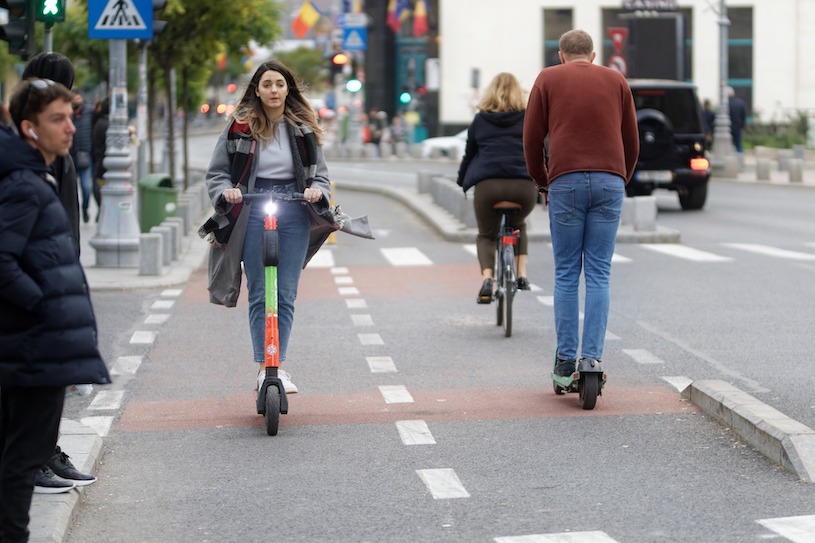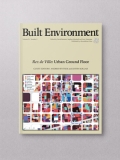For better or for worse? Electric Scooter sharing business models
For better or for worse?
The contribution of electric scooter sharing business models in sustainable urban mobility
Blog authors HENNA SUNDQVIST-ANDBERG, ANU TUOMINEN and HEIDI AUVINEN are contributors to the Built Environment Special Issue on Micromobility & Urban Space, edited by Nils Fearnley.
In recent years, the availability of micromobility services in cities has boomed. The emergence of these new services, particularly shared e-scooters, has had a mixed reception, ranging from pure joy to fierce outrage. The topic is by no means neutral in the scientific community, as we noticed during our research journey on understanding sustainability in the context of e-scooters and urban mobility.
While shared e-scooters are often promoted as an emission-free and convenient way to complement public transport and thus a sustainable mode, several studies have raised various concerns. These include concerns over their environmental sustainability, increased accident risk, parking violations leading to street clutter, inclusivity concerns and health issues related to reduced physical activity if e-scooter use replaces walking or cycling. In our research, we wanted to study how, in practice, e-scooter operators aim to contribute to environmental, social and economic sustainability through their services. We were also interested in understanding what kinds of barriers hinder sustainable value creation and how these new business models can contribute to urban mobility in Finland.
E-scooter operators are often growth and sustainability-oriented start-ups who are busy in developing their initial business and governance models. Even though many of the companies are still in their infancy, they have managed to disrupt the existing mobility patterns in cities. The rapid growth is closely associated with the negative issues emerged from the launch of shared e-scooter fleets, rivalry between companies and lack of regulation. However, many e-scooter operators have put efforts to improve their business and governance models to mitigate these challenges. As our qualitative study indicates, in fact, e-scooter operators have developed a versatile set of approaches aiming to improve sustainability in terms of their environmental and safety performance. While the main target is to deliver functionality over ownership, combinations of approaches are applied that contribute positively to sustainability. These activities focus on increasing the lifecycle of scooters, recycling of scooters and their parts, using renewable energy, committing to climate compensation, promoting road safety and the responsible use of scooters, and taking a stewardship role by complementing the public transport system.
Besides developing their business internally, the companies have entered into rather close collaboration with cities with the aim to jointly mitigate the identified challenges. In our case country Finland, co- and self-regulation is emphasized, since there is a lack of binding regulation that could help to overcome the negative implications of e-scooter use.

Figure 1: E-scooters in use.
Does this all mean then that these e-scooters business models can contribute positively to sustainable urban mobility? The answer is both yes and no. These business models can contribute positively to the certain aspects of sustainability but they can also have negative impacts on others. In Finland, one of the key contributions to sustainable urban mobility is likely to occur when and if e-scooters can encourage citizens the use more public transport by serving the first and last miles of these journeys. While cities and e-scooter operators favour the integration of public and private services, it is still at an early stage.
On the other hand, there are also sources of unsustainability that can affect the urban transport system. For example, current business models favour convenience over physical activity, which can reduce the amount of active travel and use of city bikes. This competition of e-scooters with active modes, such as walking and cycling, and public transport modes concerns officials in municipalities and public transport agencies.
In the end, it is all about trade-offs. Sustainability as a concept is rather ambiguous and open-ended and sometimes the term sustainable development is favored instead as it shows the evolving nature. Pursuing sustainable development thus means actively balancing between the different environmental, social, cultural, and economic dimensions of sustainability, and making informed choices. In the case of the e-scooter services in Finland, the balancing process is still underway.
________________________________________________________________
As ever we welcome further Built Environment blogs & tweets on this theme!
Listing Image/Image 1: Title (Urban EScooter: Pixabay, Surprising Shots, via Pixabay Licence)


